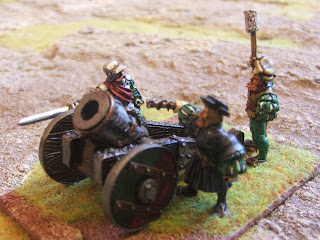The Story of the Cleansing Flame
From the
ashes of the old are born the new, and the fire shall have cleansed
them, and they shall be free of evil.' Chronus Goodheart at the funeral
pyre of the Brotherhood.
Chronus Goodheart was a member of a
singular band of crusaders in the holy war against the Arabians. He was
one of the Brotherhood. Chronus came from a deeply religious family and
firmly believed in the ways of the West. He abhorred the swarthy,
outlandish men of Araby and their insidiously evil culture. Now he was
confronted by the most hideous scene he could possibly have envisaged.
Before
him was a sight that turned his stomach, and a stench that spelled both
his nostrils and his soul. It was human carrion, carrion that had once
been friend and fellow crusader. Chronus and his three companions were
puzzled arid horrified at the sickening carnage that had fallen upon
their fellows. It was the work of no man, or no sane man at least, they
reasoned.
They built a great funeral pyre to consume what remained
of the Knights of the Brotherhood. As the flames bellowed and roared
one of Chronus's Knights made a strange discovery amongst the ruins
where the massacre had taken place. Returning to Chronus he told of his
find, and Chronus at once investigated. What the young Knight had
chanced upon was an underground sanctuary -originally part of a temple,
but now hidden amongst the ruins. Entering inside Chronus saw the blood
stained frescoes, frescoes that depicted scenes of horror and perversion
of an altogether abhuman nature. Worst of all, upon the floor lay the
discarded uniform and equipment of a Knight of The Brotherhood.
Eroneus, he gasped, as he recognised the clothing of one of the company, Eroneus Balbadron, his own cousin.
Chronus's
mind was thrown into chaos. Clearly his cousin had been murdered, and
in a manner both foul and inhuman. The whole thing stank of some
perverse religious ritual, of a terrible sacrifice to who knows what
hellish god.
But it was Garland, the standard bearer who glimpsed
the truth, for in his youth he had seen the secret woodland temples of
the Gods of Chaos, and had heard rumours of their deeds. He came from
the forests of the Empire, lands deep enough, and dark enough to hide
the minions of chaos and their victims. In the ruins of the temple he
recognised the signs.
Chronus was struck dumb at what Garland told
him. To find that his own cousin was the monster that had undoubtedly
precipitated, if not actually accomplished, the deaths of so many good
Knights, was a considerable blow.
The Knights packed the sanctuary
with straw, and around the whole circuit of the hill they spread such
flammable materials as lay to hand. Within an hour the whole hilltop was
on fire, and what little remained of the Knights of The brotherhood,
and of the strange temple, was utterly destroyed. As the flames burned
each Knight swore a great and binding oath.
'This shall be our
call to arms and symbol, the flame of our burning brothers. We must keep
the flame burning until such time as our oath is fulfilled and the
world cleansed of the evil of Chaos. Only then can our souls rest in
peace. And the flame we shall bear as our device, and -the minions of
Chaos will come to fear us, and we shall be known as the Avenging
Knights of the Cleansing Flame. So it was that the four Knights
travelled abroad in search of Eroneus. They encountered much evidence of
his passing, and many men joined them in their quest, for many were the
unspeakable acts committed by the defilers of Chaos.
That's a regiment of renown designed by Jes Goodwin and released in May 1985.
The text and photos above were edited in the CITADEL JOURNAL N°5
I use this regiment with my HOTT empire army.Since I paly HOTT with extralarge bases (official sizes x 1,5. i.e. 9cm front) there are twelve figures on the regimental base.
I use this regiment with my HOTT empire army.Since I paly HOTT with extralarge bases (official sizes x 1,5. i.e. 9cm front) there are twelve figures on the regimental base.


































